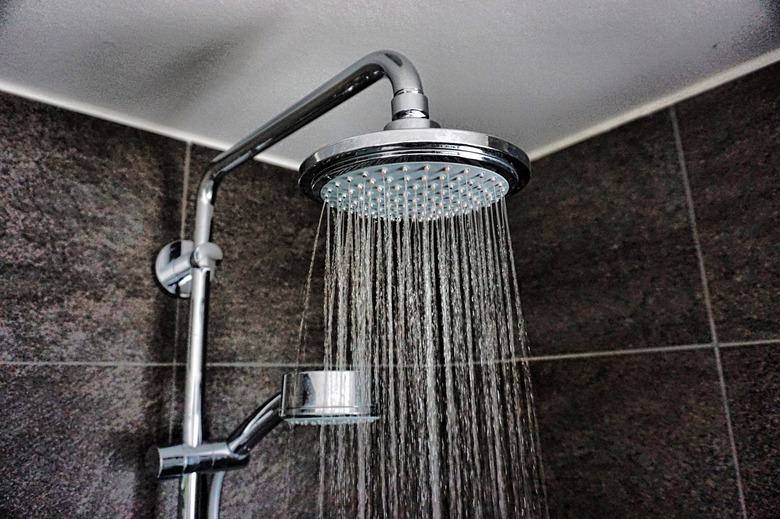How To Repair A Shower Tile Backer Board
We may receive a commission on purchases made from links.
According to most local codes, the backing material for a tiled wall in a bathroom should be cementboard or other tile backer material, and that makes sense, because backer board is a moisture-resistant material with all the stability ceramic tiles need.
Drywall isn't quite as impact-resistant as cementboard, but neither material damages easily, especially when covered with tiles. An impact strong enough to damage either backing material would definitely also damage the tiles, and that's good in a way. The tiles have to come off before you can fix the backer board, and they are easier to remove if they're already cracked and broken.
To fix a damaged area of backer board or drywall, you have to completely uncover the damaged section plus an extra perimeter area that allows you to cut out a rectangle that includes the damaged part. It's best if the cutout overlaps at least two wall studs so you have something to which you can fasten the replacement material.
Have some damaged backer board? Here's how to fix it.
1. Demo the Damaged Material
1. Demo the Damaged Material
Getting damaged tiles off the wall is a matter of prying them with a stiff putty knife, but before you can remove tiles in good condition, you first have to break up the grout. Do this with a hammer and chisel, and then pry the tile as soon as you can get the putty knife underneath it without damaging the tile. Continue removing tiles until you've uncovered a rectangular area long and wide enough to allow you to cut out the damaged area. Scribe a rectangle on the backer board with a straightedge and pencil.
If the backer board is drywall, you can cut along the lines with a drywall saw. It's not a good idea to use a drywall saw to cut cementboard, though; the abrasive material quickly dulls the saw. The best way to cut it is with an angle grinder that has a diamond cutting wheel. You can also use a jigsaw or hacksaw fitted with a metal-cutting blade, but you'll probably have to throw out the blade when you're done.
2. Replace the Backer Board or Drywall
2. Replace the Backer Board or Drywall
If you worked carefully, you'll have a rectangular cutout that is easy to measure. Transfer the measurement to a new sheet of the same material and cut it out by scoring with a knife or using a power saw. Place the rectangular section of new material in the hole in the wall and fasten it to the studs with the recommended fasteners. Use stainless steel drywall screws for drywall; use cementboard screws for cementboard.
3. Fill the Seams
3. Fill the Seams
Don't worry if the edges between the new backer board and the existing material aren't clean and straight. Just fill large gaps with an appropriate compound or mortar. In the case of cementboard, it's best to use thinset mortar, but if you're replacing drywall, use a setting-type joint compound (hot mud) powdered patching compound that you mix with water.
Mix the mortar or compound as directed by the manufacturer, and apply it to the seams of the patch with a small drywall knife, filling all gaps and smoothing the top flush with the board surface. Let the material dry overnight.
4. Tape the Seams
4. Tape the Seams
Finally, apply fiberglass joint tape (use cementboard tape for cementboard) over the seams. Mix a fresh batch of mortar or compound and apply a thin layer over the tape, smoothing it flat. Let it dry overnight. When the mortar or mud sets, you're ready to fill in the area with new tile and grout.
